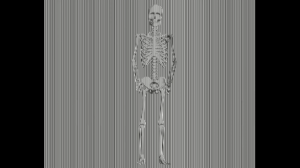The research lab was interesting more than anything. Hearing peoples divided opinions about our exercises caused me to believe that thought and feeling are different for each individual in Contact Improvisation, even if the principles are the same.
The question we proposed to the group was;
How are the senses heightened or forgotten when moving through contact improvisation, with vision or without?
Senses and sight in particular are one of the most important principles in Contact Improvisation to produce a form of communication between two people. Influenced by our ‘Sensing Weight in Movement’ (Ravin, Susanne, 2010) reading where it talks about the senses being a function of how we move and out inner sensations are to be understood, meaning that our body moves as one and we are constantly receiving information from all of our senses, we just don’t always pay attention to all of them. Finally our senses tell us how we feel about situations we have been presented with. We wanted to see what would happen if we took these senses away from our peers and collect their opinions on how they felt. We came up with two exercises which were ‘lead and follow’, one with the eyes opened and the other closed, our other exercise was ‘complete the image’ with eyes open slowly closing the eyes when both partners felt comfortable to improvise however they chose.
When we asked questions at the end of our session we had a mixed set of opinions.
Question 1
- Which connection was stronger, with your eyes open or closed? Why?
Overall people said that creating a connection in the second task was harder because you couldn’t see each other and they don’t think you can get a connection without eye contact.
Question 2
- Did you feel different with eyes closed compared to open?
Dancing when both partners have their eyes closed is frightening because you don’t want to injure your partner, but in the 1st exercise it was easier because there was less judgement on what movements they created.
Question 3
- Did you create new movements?
New movements were created in the 1st exercise compared to the 2nd, they think this again was down to feeling less comfortable when both eyes were closed. One person said they think they created new movements because they worked with someone they have never worked with before.
Question 4
- Which senses were heightened or lost?
Some people said that they lost all senses when their eyes were closed because they were concentrating on where their partner was, but others said that their sight was still in use as they used the difference of light and dark shadows to see where their partners were and their sense of touch was heightened to feel what each partner wanted to do next movement wise.
The 1,2,3 falling exercise made me feel anxious, it took me a while to be the person to be caught. I think this was down to me not feeling safe that someone would catch me in time, after I got over this it was a relief to know that I was caught and I actually found it relaxing giving all my weight into others. Catching other people gave a sense of responsibility, it felt rewarding to work as a team in order to make people feel safe. I found the fighting monkey exercise difficult when working with someone I’m not familiar with, it was hard to keep resistance against each other and to not loose contact. The transitions between the arms action going onto the back made it easier to find the connection again.
Finally the ‘Small Dance’ caused confusion with me. A question that has occurred is;
How can Small Dance be done in Contact Improvisation? Small Dance is described as the sensations of movement that happen when you find ‘stillness’ within the body. The small shifts of weight that you feel when standing still. Which proposes the question of; Is there such thing as complete stillness? The small dance exercise created a sensation of irritation and caused a burning feeling in my body at first, when we were asked to releve I found it difficult, there was no balance in my body. I think this was because our eyes were closed and I didn’t have a fixed point to concentrate on. Going into movements I don’t think that I was moving with impulses meaning that I wasn’t creating authentic movements, it was forced. This left me with a few questions;
Are we in control of our reflexes?
Why do I get irritated and burning sensations when standing still?
Bibliography
Brown, B. (1997) Is Contact a Small Dance? Contact Improvisation Sourcebook I, 6, 72-75.
Ravn, S. (2010) Sensing weight in movement. Journal of Dance & Somatics, 2 (1) 21-34.
ZayacZhe. (2017). Steve Paxton Smalldance. [Online Video]. 6 December 2009. Available from: https://www.youtube.com/watch?v=6sJKEXUtv44. [Accessed: 22 October 2017].
Leave a comment